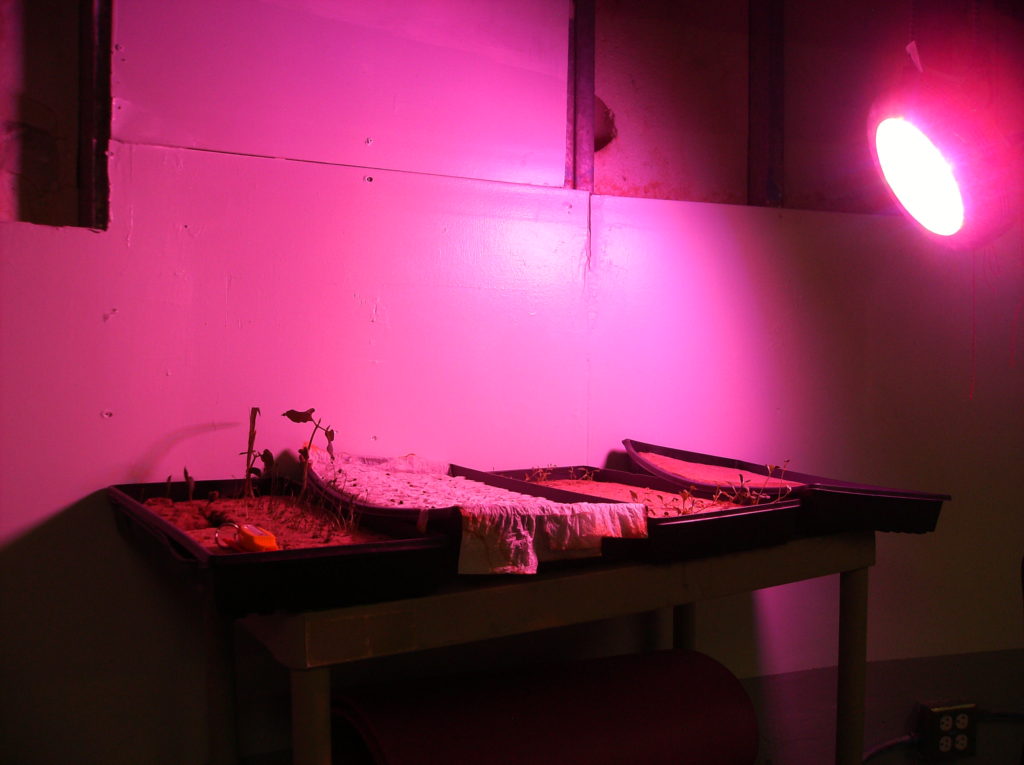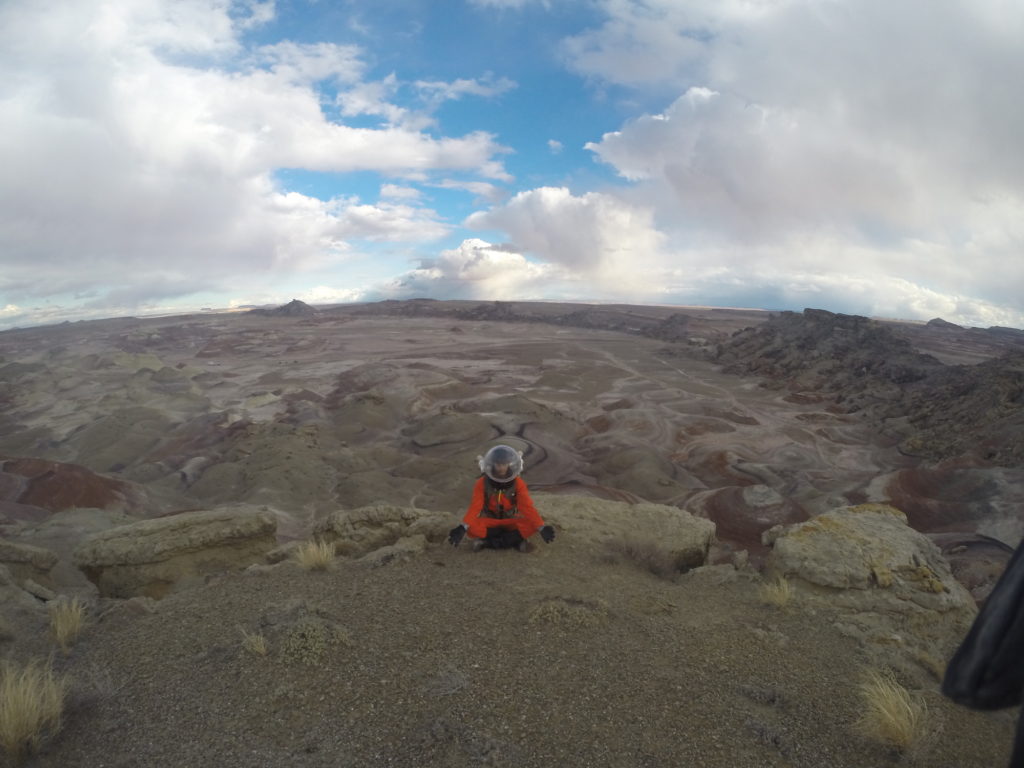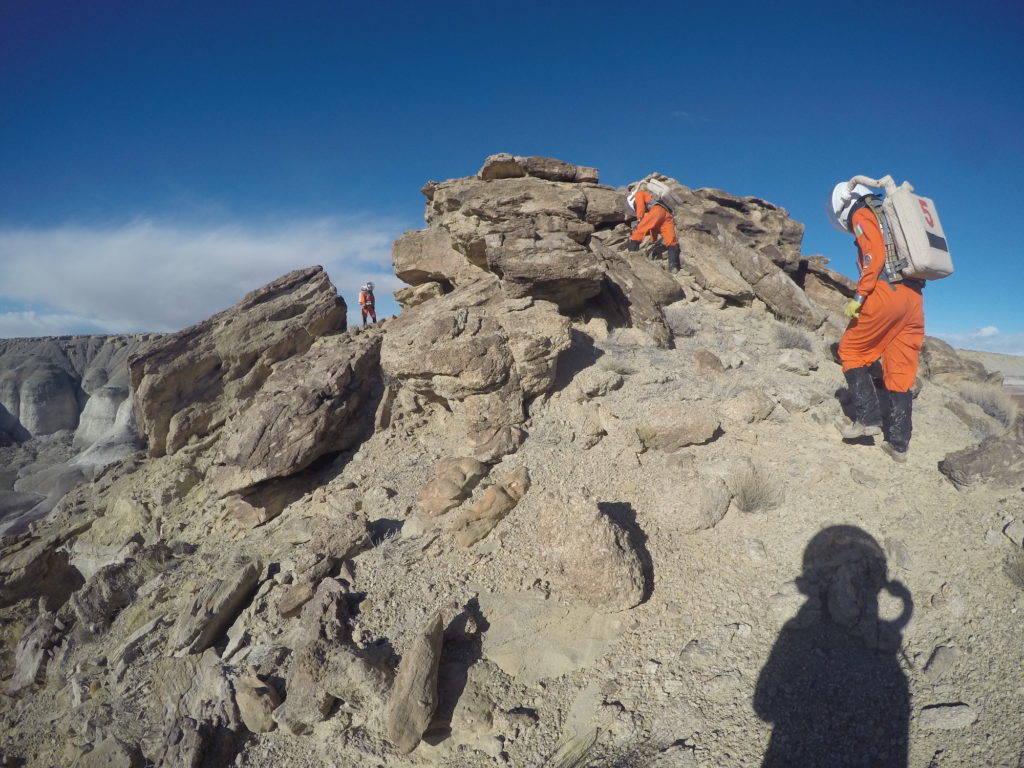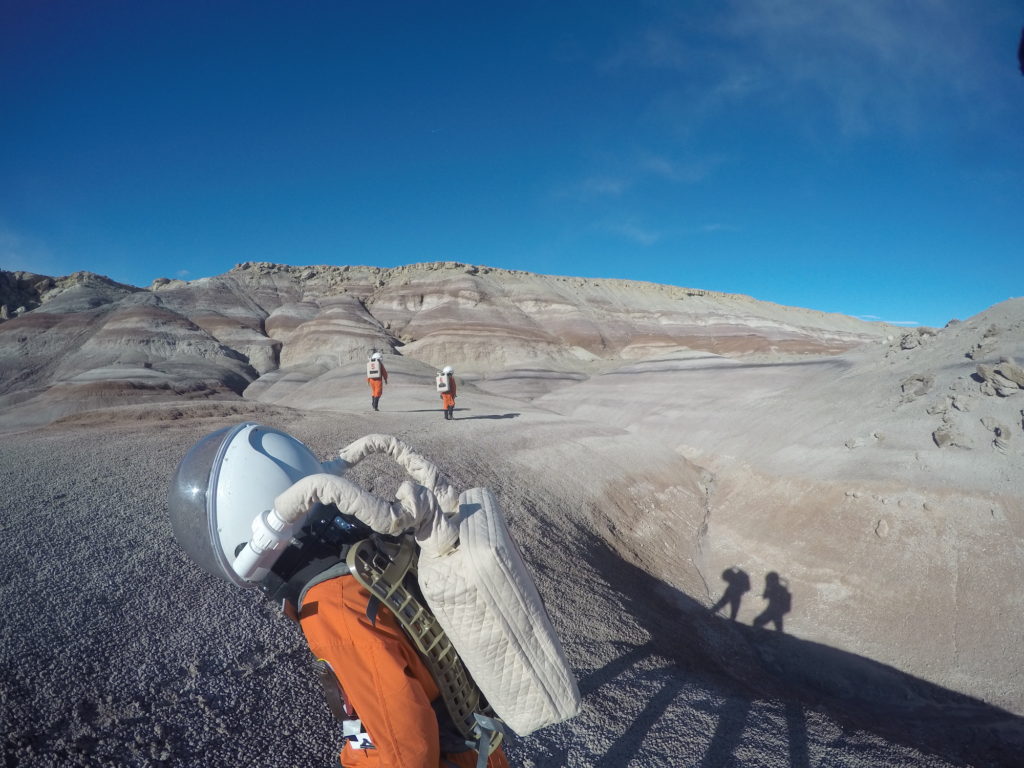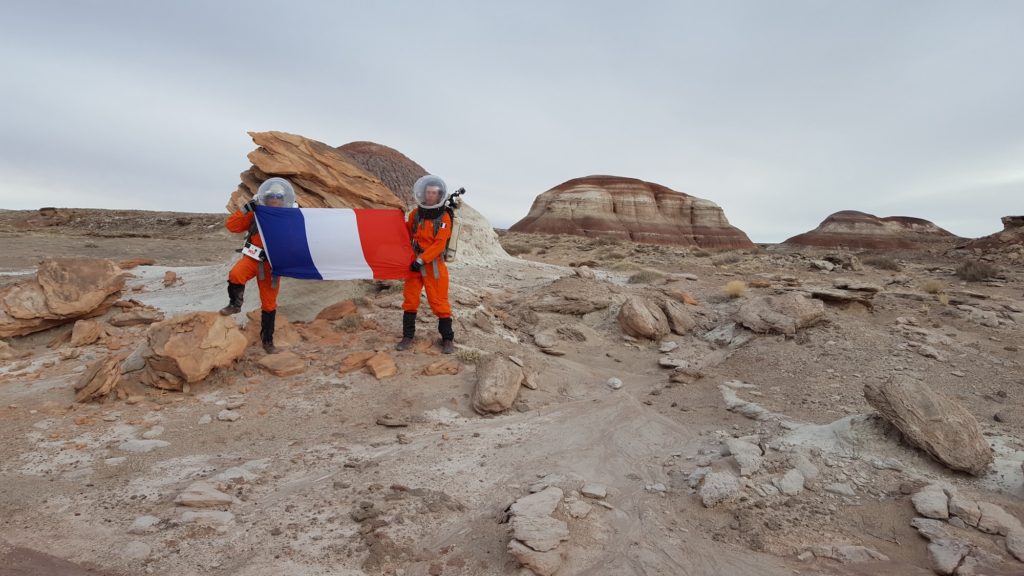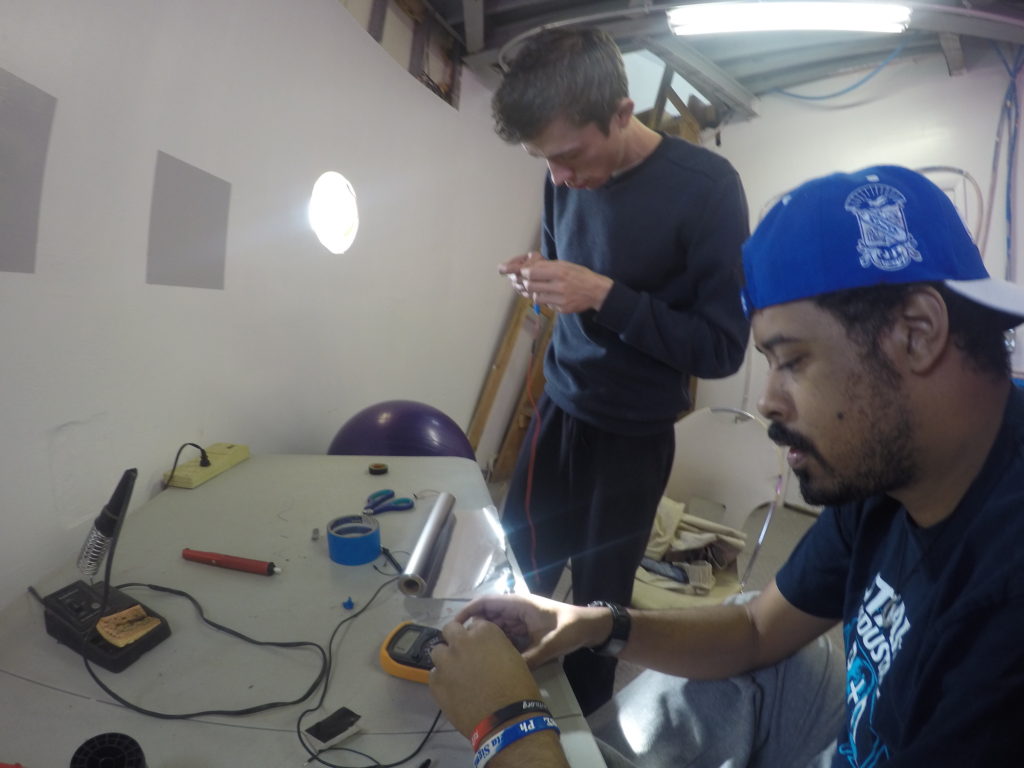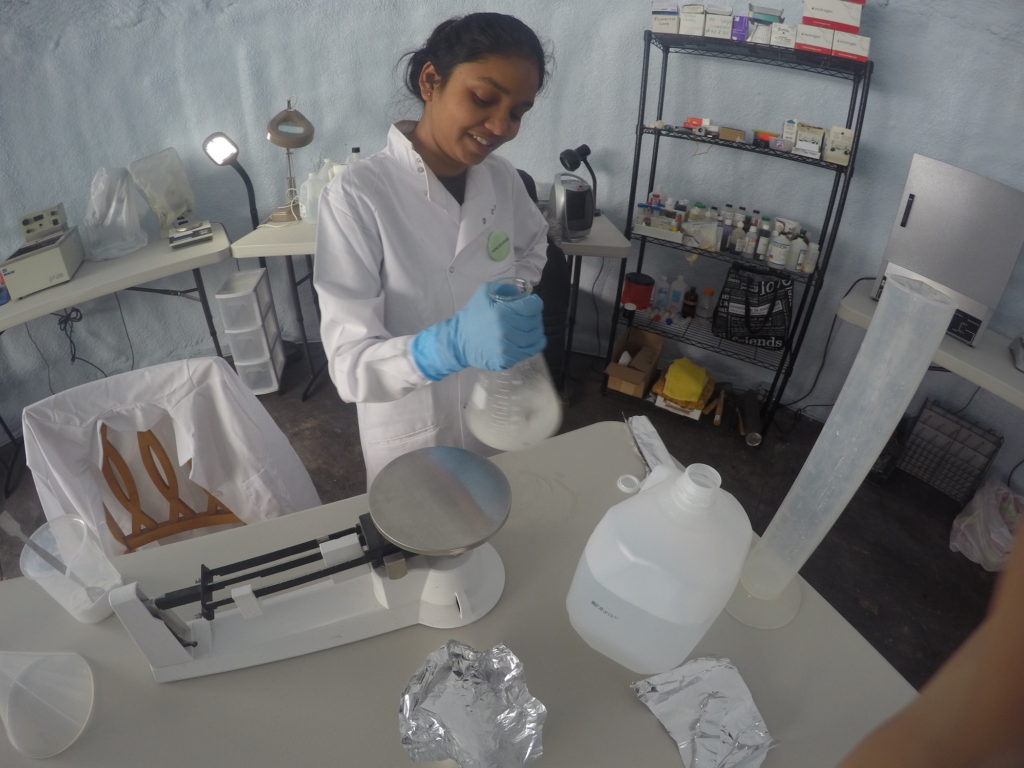“Quantifying patterns of diversity of halophiles at planetary analog site while simulating a human mission to Mars” – A quick recap
By Anushree Srivastava
Crew Biologist – Mars 160 Twin Desert-Arctic Analog Mission
Executive Officer and Crew Biologist – Crew 172
Recording the pattern of diversity of halophiles in the Mars analog environment of Utah Desert has been one of the prominent goals of Mars 160 mission. I was supposed to carry forward this objective using standardized microbial detection and identification methods as a Crew Biologist of both Mars160 mission and Crew 172. I performed field and lab work as Mars-based Astronaut-scientist living at the Mars Desert Research Station. All samples were collected in full simulation suit from different experimental sites chosen by our Mars160 Crew Geologist Dr Jonathan Clarke. Our research was conducted in collaboration with Earth-based remote science team Dr Kathy Bywaters of NASA Ames Research Centre via asynchronous communication. This work was important for comparison of science return.
My primary objective was to simulate the exact process of collection of soil samples and ancient gypsum deposits as how it is supposed to be done in the real Mars mission. Mars Desert Research Station has its laboratory, equipped with standard facilities required to perform basic microbiological experiments. Therefore, as Mars-based Astronaut-scientist, I was supposed to collect the sample and take them back to our laboratory to process them.
I performed the extraction of microorganisms from soil samples and then plating on nutrient agar. The idea behind extraction and plating was to observe the colonies growing at the particular concentration of sodium chloride (salt). My intention was to keep increasing the salt concentration to retrieve the rare ‘extreme’ halophiles for further molecular analysis. My samples included soil from the region of salt efflorescence and sulphur precipitation from different experimental sites. As well as, I plated halophiles from ancient gypsum samples that I collected during multiple extra-vehicular activities with Dr Clarke.
We have observed an interesting feature in the agar plates colonized by halophilic microorganisms at high salt concentration. We have found salt crystallization in some of those plates. According to Dr Rebecca Merica, an Earth-based microbiologist, media with high salt concentration is drying up and causing crystallization. These crystals could be halite. For me, the most fascinating idea is that the media which is crystalizing via evaporation has been colonized by halophilic microorganisms. So, they may have been buried inside those crystals during crystallization. Now, it will be interesting to record the time of crystallization and the prolonged duration of the entombment of halophiles. This study could be significant to assess the long-term survivability of halophiles buried inside evaporite crystals. This process is an important replication/simulation of the natural process of evaporation of sea water, crystallization of salt, and entombment of halophiles.
Ancient terrestrial evaporite deposits, brine, or salt precipitation are excellent analogs of astrobiological exploration of Mars. Scientists have proposed the presence of sulphate and chloride-bearing deposits on Mars (Vaniman et al., 2004; Gendrin et al., 2005; Langevin et al., 2005; Osterloo et al., 2008). Furthermore, perchlorate has been detected on Mars at a concentration ~0.5 % wt by Phoenix lander (Hecht et al., 2009). Interestingly, it has been shown that salty-water (brine) can occur on Mars due to mineral deliquescence (Davila 2010; Chevrier 2009; Zorzano 2009; Mölmann 2008, 2010; Fisher et al 2014) and any trapped liquid water (fluid-inclusions) in these salt deposits may potentially harbour either active or dormant microbial ecosystem on Mars.
The first phase of the Mars 160 mission and Crew 172 is over now. So, the unaccomplished science goals/experiments will be carried forward to the second phase of Mars160 mission, which is going to be conducted at FMARS in the Canadian Arctic in summer 2017. Furthermore, I intend to process the samples of gypsum deposits of Jurassic period (175-200 million years old) “back on Earth” in a highly specialized laboratory environment with Mars160 Earth-based scientists.
Figure 1a: Anushree working in the MDRS laboratory.
Figure 1b: Anushree observing microbial colonies on plates. (Image credit: Nicholas McCay – Crew Journalist – Crew 172)
~~~~~~~~~~~~~~~~~~~~~~~~~~~~~~~~~~~~~~~~~~~~~~~~~~~~~~~
Further Reading:
Chevrier, V.F., Hanley, J., and Altheide, T.S. (2009) Stability of perchlorate hydrates and theirliquid solutions at the Phoenix landing site, Mars. Geophys. Res. Lett. 36, doi:10.1029/2009 GL037497.
Davila, Alfonso F., et al. “Hygroscopic salts and the potential for life on Mars.” Astrobiology 10.6 (2010): 617-628.
Fischer, E., Martínez, G. M., Elliott, H. M., & Rennó, N. O. (2014). Experimental evidence for the formation of liquid saline water on Mars. Geophysical research letters, 41(13), 4456-4462
Gendrin, A., Mangold, N., Bibring, J.-P., Langevin, Y., Gondet, B., Poulet, F., Bonello, G., Quantin, C., Mustard, J., Arvidson, R., LeMoue´ lic, S., 2005. Sulfates in Martian layered terrains: the OMEGA/Mars Express view. Science 307, 1587–1591.
Langevin, Y., Poulet, F., Bibring, J.-P., Gondet, B., 2005. Sulfates in the North Polar region of Mars detected by OMEGA/Mars Express. Science 307, 1584–1586.
Möhlmann, D.T. (2008) Are nanometric films of liquid undercooled interfacial water biorelevant? Cryobiology 58:256–261.
Möhlmann, D.T. (2010) The three types of liquid water on the surface of present Mars. Int. J. Astrobiology 9:45–49.
Osterloo, M.M., Hamilton, V.E., Bandfield, J.L., Glotch, J.L., Baldridge, A.M., Christensen, P.R., Tornabene, L.L., and Anderson, F.S. (2008) Chloride-bearing materials in the southern highlands of Mars. Science 319:1651–1654.
Vaniman, D.T., Bish, D.L., Chimera, S.J., Fialips, C.I., Carey, J.W., Feldman, W.C., 2004. Magnesium sulfate salts and the history of water on Mars. Nature 431, 663–665.
Zorzano, M.P.,Mateo-Martı´, E., PrietoBallesteros,O.,Osuna, S., and and Renno N. (2009) Stability of liquid saline water on present day Mars. Geophys. Res. Lett. 36, doi:10.1029/2009GL040315

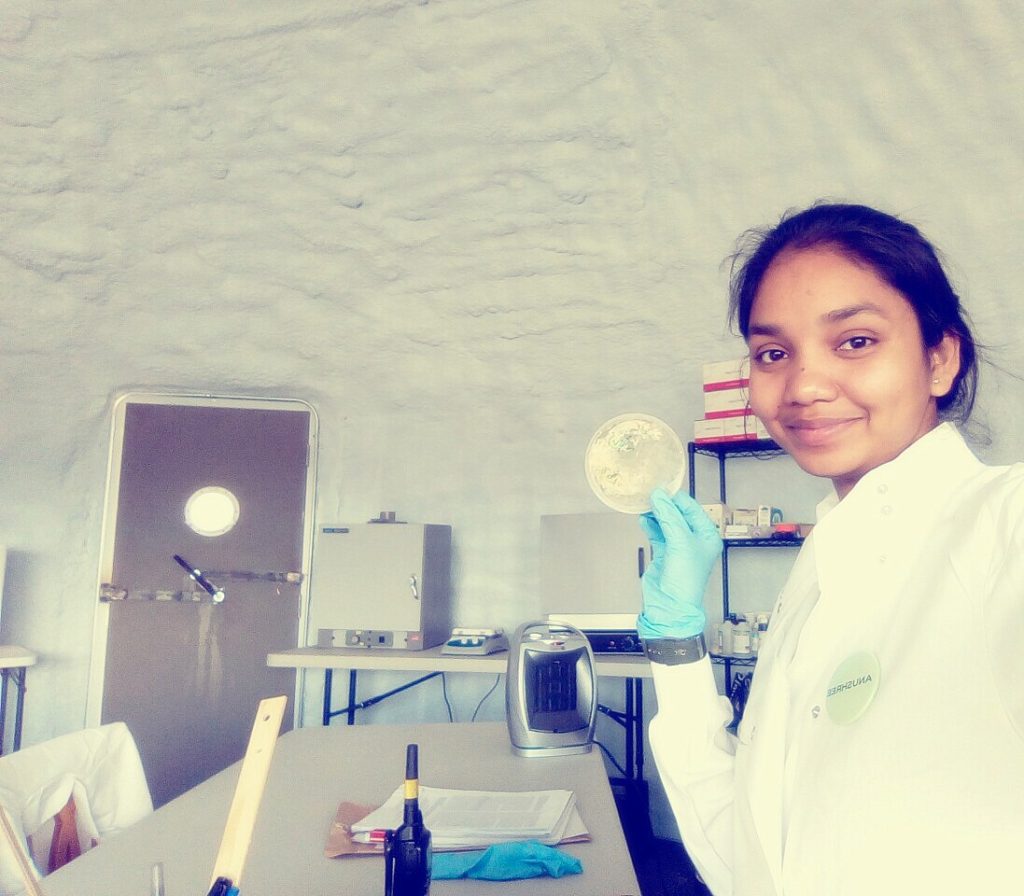



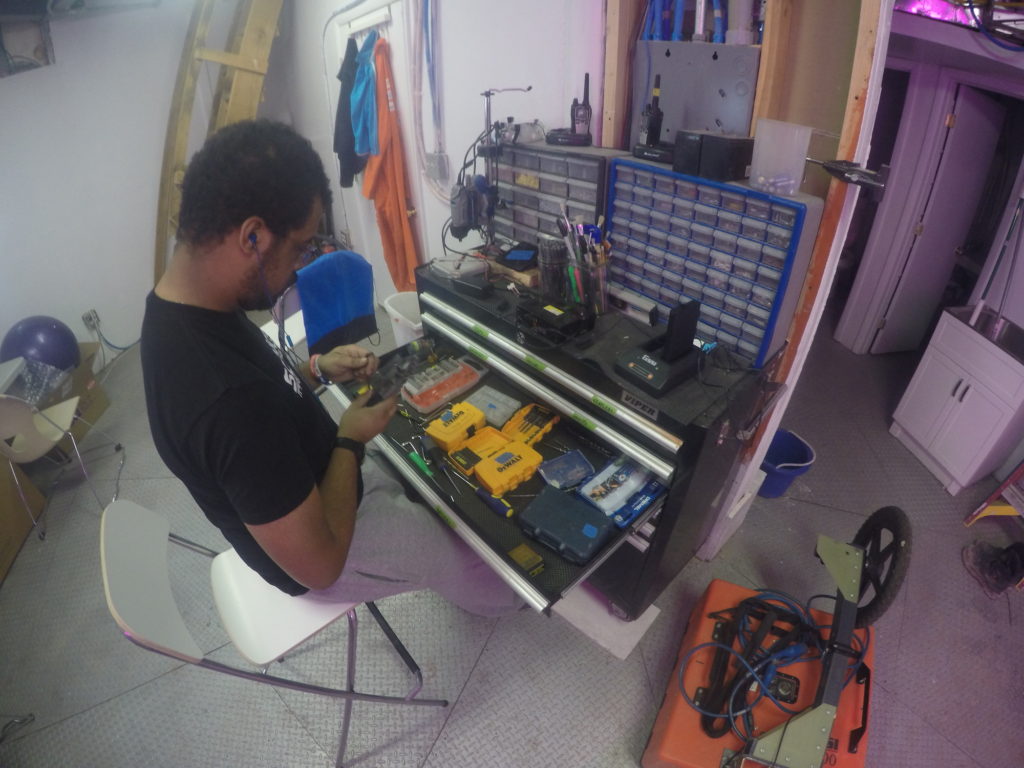
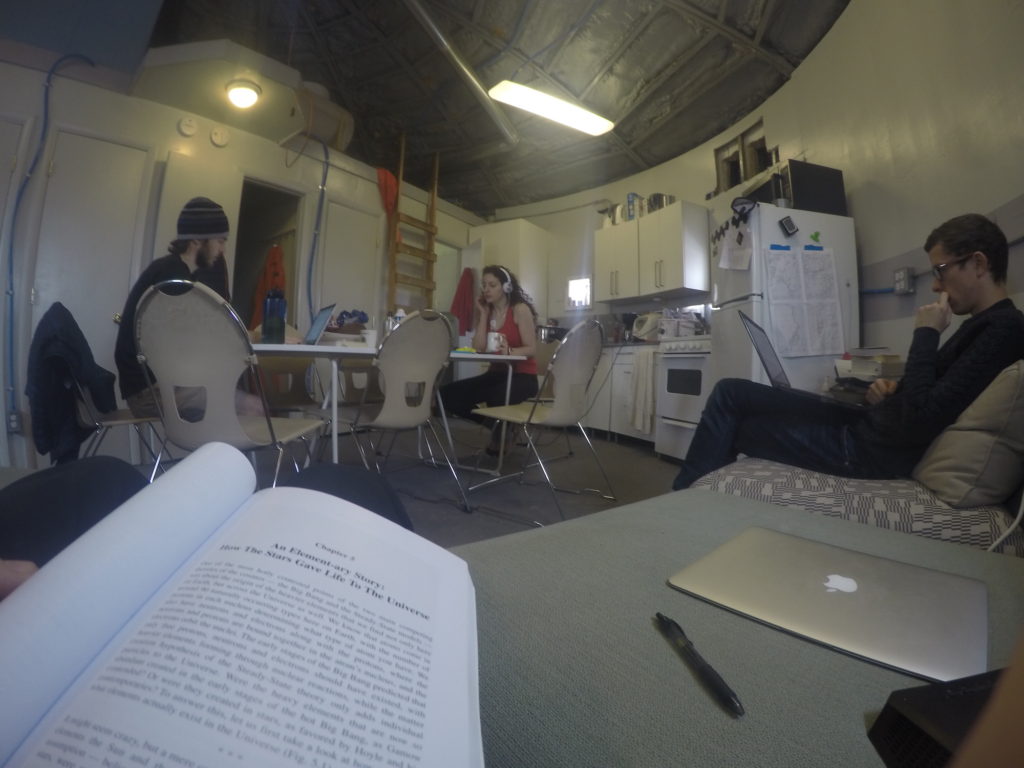
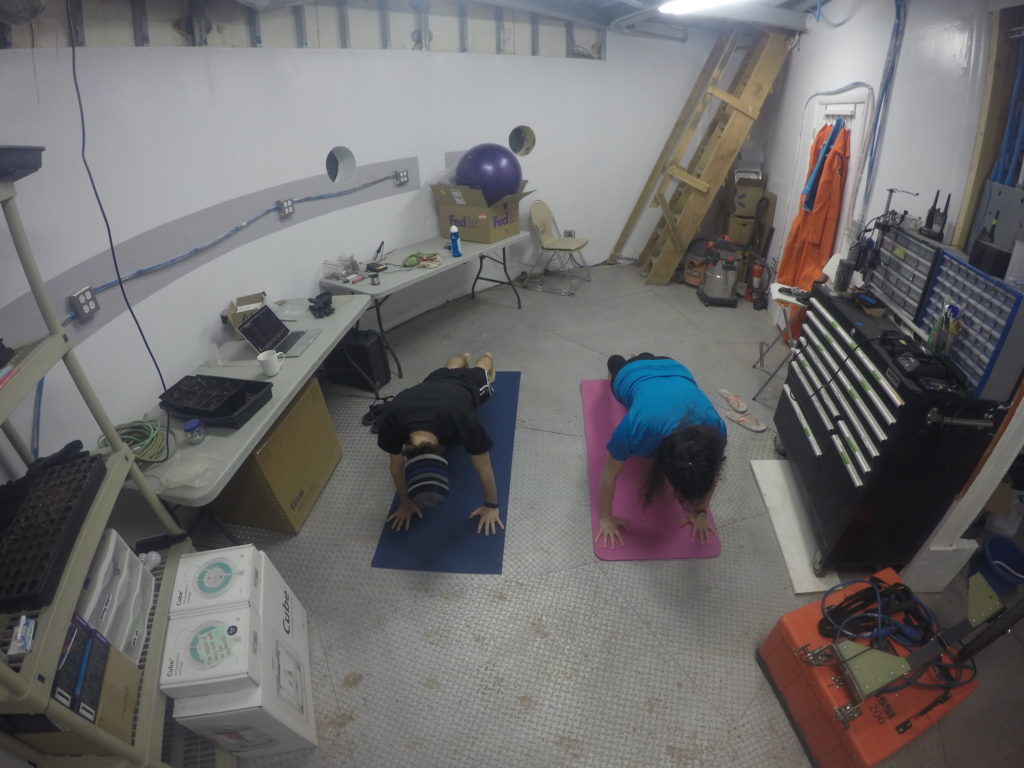
 EVA Team Suiting Up
EVA Team Suiting Up



